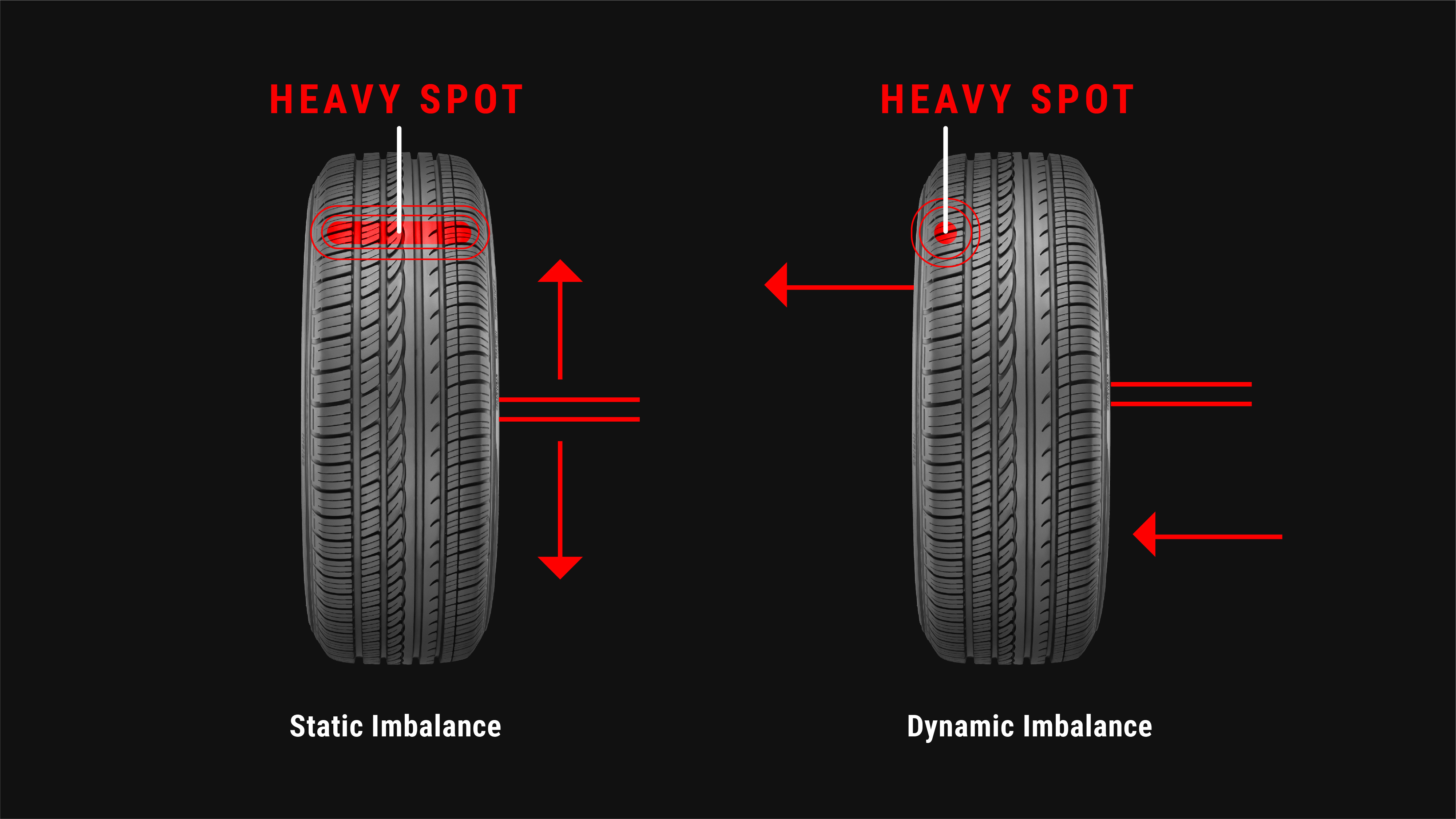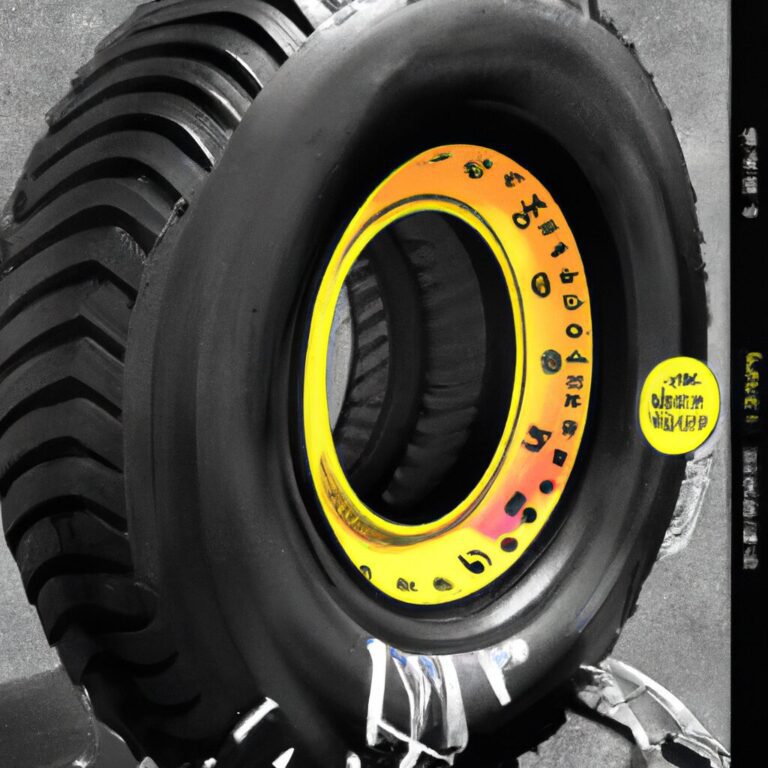Rear Tire Out of Balance Symptoms
Symptoms of a rear tire out of balance include vibrations and uneven tire wear. Ensure proper balance maintenance to avoid safety hazards and extend tire lifespan.
When a rear tire is out of balance, it can lead to serious issues such as reduced traction, steering instability, and accelerated wear and tear. These symptoms can compromise your driving experience and safety on the road. Regularly inspecting and balancing your rear tires is essential for optimal performance and longevity of your vehicle.
By addressing these symptoms promptly, you can prevent further damage and ensure a smoother, safer ride.

Credit: www.wikihow.com
What Is Tire Balance?
Tire balance refers to the even distribution of weight around a tire to ensure proper performance. Rear tire out of balance symptoms may include vibrations, uneven wear, and decreased handling.
What is Tire Balance? Tire balance refers to the equal distribution of weight around a tire and wheel assembly. When a tire is balanced, it spins without causing any vibration. It is essential for a smooth and safe driving experience. Let’s explore the causes of tire imbalance and the importance of tire balance in more detail. Causes of Tire Imbalance 1. Tire Wear: Uneven tire wear can lead to imbalance, causing the tire to vibrate. 2. Wheel Weight: If the wheel weights are not distributed evenly, it can result in imbalance. 3. Wheel Alignment: Misaligned wheels can cause uneven tire wear, leading to imbalance. 4. Suspension Issues: Damaged or worn-out suspension components can lead to tire imbalance. Importance of Tire Balance 1. Safety: Balanced tires ensure stable and comfortable driving, reducing the risk of accidents. 2. Smooth Ride: Balanced tires provide a smoother, more comfortable driving experience. 3. Extend Tire Life: Properly balanced tires experience less wear and tear, resulting in a longer tire lifespan. 4. Improved Fuel Efficiency: Balanced tires reduce rolling resistance, improving fuel efficiency. In summary, understanding tire balance is crucial for maintaining a safe and smooth driving experience. Being aware of the causes of imbalance and the importance of tire balance can help ensure your vehicle’s tires remain in optimal condition, contributing to overall driving safety and performance.Symptoms Of A Rear Tire Out Of Balance
Symptoms of a Rear Tire Out of Balance:
Vibrations At Certain Speeds
Rear tire out of balance can cause noticeable vibrations in your vehicle, especially at certain speeds.
Uneven Tire Wear
One symptom of a rear tire being out of balance is uneven tire wear.
Steering Wheel Vibration
Another indication of a rear tire being out of balance is vibration in the steering wheel.
Effects Of Riding With An Imbalanced Rear Tire
When riding with an imbalanced rear tire, several noticeable effects can impact your motorcycle. Let’s explore the consequences of neglecting an out-of-balance rear tire.
Reduced Fuel Efficiency
An imbalanced rear tire can lead to reduced fuel efficiency, causing your bike to consume more fuel than necessary.
Increased Wear On Suspension Components
Riding with an imbalanced rear tire can accelerate wear on your suspension components, potentially leading to costly repairs.
How To Check Rear Tire Balance
When it comes to ensuring a smooth and safe ride, checking the balance of your rear tires is crucial. Imbalanced rear tires can lead to uneven wear, vibrations, and even decreased fuel efficiency. To maintain optimal performance and safety, it’s important to regularly check and balance your rear tires. Below, we will discuss the process of how to check rear tire balance, covering visual inspection and the spin balance test.
Visual Inspection
Before delving into a more complex assessment, start by visually inspecting the rear tires. Look for any signs of irregular wear such as cupping, feathering, or bald spots. This can indicate an imbalance or other issues that need attention. Check for any visible damage, such as bulges or cuts, as these can also contribute to an imbalance and compromise tire performance.
Spin Balance Test
If a visual inspection reveals no obvious issues, the next step is to perform a spin balance test on the rear tires. This can be done using specialized equipment typically found at auto repair shops. The test involves mounting the rear tire on a machine, which then spins it at high speeds to determine if there are any imbalances. The technician can then add small weights to balance the tire and ensure smooth rotation.
Fixing A Rear Tire Out Of Balance
Rear tire out of balance can cause a bumpy and uncomfortable ride, and if left unaddressed, it can lead to further damage to your vehicle. Fortunately, fixing a rear tire out of balance is a relatively simple task that can be done either by a professional or as a DIY project. In this article, we will discuss two approaches to balancing your rear tire: professional balancing and DIY balancing.
Professional Balancing
When it comes to fixing a rear tire out of balance, professional balancing is the most recommended option. Professional balancers use specialized equipment and advanced techniques to ensure precise and accurate balancing of your rear tire. Here are some benefits of opting for professional balancing:
| Advantages of Professional Balancing |
| – Expertise in identifying the exact cause of the imbalance. |
| – High-quality equipment that provides accurate results. |
| – Saves time as professionals have the necessary skills and knowledge. |
| – Ensures long-term stability and smooth performance of your rear tire. |
If you decide to go for professional balancing, make sure to choose a reputable auto repair shop or tire service center that has well-trained technicians and state-of-the-art balancing equipment. They will diagnose the issue, identify the correct weight distribution for your tire, and balance it using precision techniques.
Diy Balancing
If you prefer a hands-on approach and have basic knowledge about tire balancing, you can opt for DIY balancing. DIY balancing can be a cost-effective solution, especially if you have the necessary tools and a good understanding of the process. Here are some steps to follow for DIY balancing:
- Step 1: Secure your vehicle and elevate the rear tire you want to balance.
- Step 2: Clean the wheel and tire using soap and water to remove dirt and debris.
- Step 3: Locate the heavy spot on the tire by carefully spinning it and noting any irregularities.
- Step 4: Attach adhesive weights to the inner or outer rim of the tire, as per the guidelines provided with the weights.
- Step 5: Recheck the balance by spinning the wheel again and making adjustments if necessary.
It’s important to note that DIY balancing may not always provide the same level of accuracy as professional balancing. If you are unsure about the process or notice any further issues, it is recommended to seek assistance from a professional.

Credit: www.yokohamatire.com

Credit: www.youtube.com
Frequently Asked Questions For Rear Tire Out Of Balance Symptoms
What Are The Symptoms Of Unbalanced Rear Wheels?
Unbalanced rear wheels can cause vibrations, uneven tire wear, and steering wheel wobbling while driving. These symptoms can lead to a bumpy ride and potentially unsafe driving conditions. Regular wheel balancing is crucial for maintaining a smooth and stable ride.
Do Rear Wheels Need Balancing?
Yes, rear wheels require balancing to ensure even tire wear and a smooth ride. Balancing helps prevent vibrations and increases stability while driving.
Can Unbalanced Rear Tires Cause Steering Wheel Shake?
Unbalanced rear tires can cause steering wheel shake due to uneven weight distribution affecting wheel alignment.
What Noise Does Unbalanced Tires Make?
Unbalanced tires cause vibrating and shaking, leading to a humming or pulsating noise. This noise intensifies as the vehicle’s speed increases. It’s essential to get the tires balanced to reduce the noise and ensure a smoother ride.
How Do I Know If My Rear Tire Is Out Of Balance?
If you feel excessive vibration or shaking, especially at high speeds, your rear tire might be out of balance.
What Causes A Rear Tire To Become Unbalanced?
Common causes of rear tire imbalance include hitting potholes, curb impacts, or wearing unevenly over time.
Can An Out-of-balance Tire Affect My Vehicle’s Performance?
Yes, an out-of-balance rear tire can lead to reduced fuel efficiency, uneven tread wear, and decreased handling and stability.
Conclusion
Recognizing the symptoms of a rear tire out of balance is crucial. By being aware of these signs, you can prevent further damage to your vehicle and ensure a smoother and safer ride. Regular maintenance and prompt attention to these symptoms can help you avoid costly repairs and potential safety hazards.
Keep an eye out for these signs and address any issues promptly for optimal vehicle performance.


